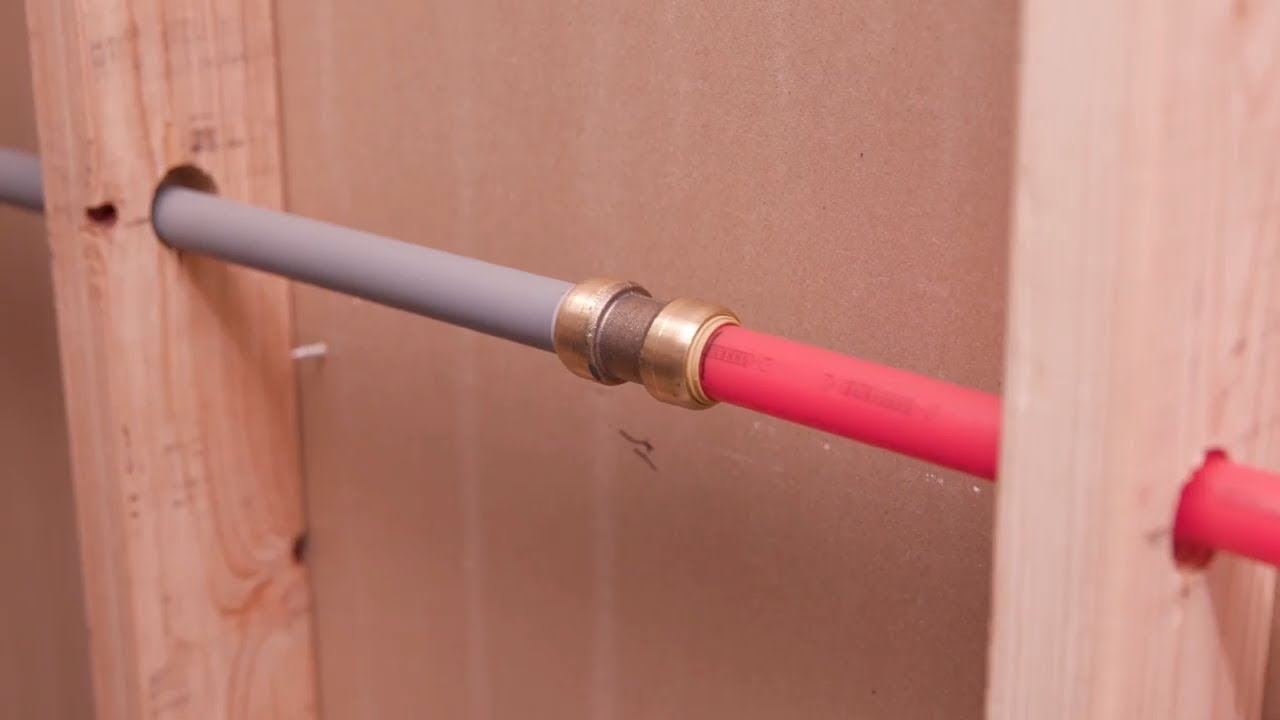
Intro
Greetings, homeowners and DIY enthusiasts! Today, let’s embark on a journey deep into the heart of your home – its plumbing. Whether you’re breathing new life into a vintage gem or fashioning a modern haven, the choice between PEX (cross-linked polyethylene) and CPVC (chlorinated polyvinyl chloride) can redefine your plumbing landscape. But before you tighten those wrenches, buckle up your tool belt, and let’s delve into the nuances of these two contenders. If you’re reading this article because you’re considering building or rehabbing a home, I strongly recommend reading this article on building new versus rehabbing. Oh, and a friendly reminder before we get our hands dirty – always check your local codes for compliance.
PEX Unveiled
Imagine a plumbing solution as adaptable as your project demands – that’s PEX for you! Renowned for its versatility, these pipes resist corrosion, ensuring a durable option that stands the test of time. The installation process is a breeze, with PEX pipes effortlessly adapting to various fittings. Like the chameleons of plumbing, this pipe uses crimp or push-to-connect connectors, streamlining installations, saving you time, and minimizing the risk of leaks. For the DIYer taking on a PEX project, you’ll need specific tools: a PEX tubing cutter, crimping tool, and compatible fittings.
Pros of PEX:
- Flexibility: Easily bends around corners, reducing the need for multiple connections.
- Freeze-Resistance: Withstands freezing conditions without cracking.
- Cost-Effective: Generally more affordable than CPVC, saving you hard-earned cash.
- Quieter Flow: it tends to muffle water flow noise better than CPVC.
Cons of PEX:
- Not UV Resistant: Keep it out of the sunlight, as PEX isn’t a fan of UV rays.
- Limited to Indoor Use: While great for indoor plumbing, it’s not suitable for outdoor applications.
CPVC Under the Spotlight
Now, shift your focus to CPVC, the robust cousin of the PVC family. CPVC pipes boast strength and chemical resistance, making them a reliable choice for various plumbing applications. For projects involving exposure to harsh chemicals, CPVC emerges as the superhero plumbing material you’ve been seeking. In terms of installation, these pipes maintain a rigid structure, holding their shape even in lengthy runs. This stability makes them ideal for projects demanding pipes to resist sagging or bowing. Additionally, it’s chemical resistance ensures pipes remain resilient in the face of potentially corrosive substances. For the DIYer venturing into a CPVC project, gather these tools: a CPVC pipe cutter, solvent cement, primer, and appropriate fittings.
Pros of CPVC:
- Chemical Resistance: Ideal for applications where exposure to chemicals is a concern.
- Rigid Structure: CPVC maintains its shape, providing stability in long runs.
- Higher Temperature Tolerance: Handles hot water better than PEX.
Cons of CPVC:
- Brittle in Freezing Temperatures: Unlike PEX, CPVC can become brittle and prone to cracking in freezing conditions.
- More Challenging Installation: CPVC requires precise cutting and solvent welding, which can be trickier for beginners.
- Potential for Leaks: Over time, joints in CPVC systems may develop leaks.
- Just because you can doesn’t mean that you should. Unless you have a decent amount of experience with plumbing installation you probably don’t want to risk taking on a large PEX or CPVC install project.
- Always be sure to check your municipal codes before starting your plumbing project.
- Layout your ideas on paper before starting any large plumbing project. Don’t guess as you go.
Choosing Your Plumbing Champion
So, how do you decide which pipe is the hero your home deserves? Consider these factors:
- Budget: If you’re watching your wallet, PEX may emerge as the winner with its generally lower cost.
- Application: Is your project indoors or outdoors? PEX excels in indoor plumbing, while CPVC might be the go-to for applications exposed to chemicals.
- DIY Comfort Level: PEX is renowned for its user-friendly installation, making it a great choice for DIYers. If you’re a seasoned pro, CPVC’s more complex installation may not be a deal-breaker.
Summary
In the ultimate face-off between PEX and CPVC, there’s no one-size-fits-all answer. It all comes down to your specific needs, budget, and comfort level with installation. PEX, with its adaptability and ease of installation, is the budget-friendly contender ideal for indoor projects. On the other hand, CPVC, known for its strength and chemical resistance, stands as a robust choice for applications involving harsh substances. So, whether you’re giving an old beauty a facelift or crafting a new masterpiece, weigh the pros and cons, gather your tools, and choose the plumbing champion that aligns with your vision for a leak-free, stress-free home. And don’t forget to check those local codes – happy plumbing!

